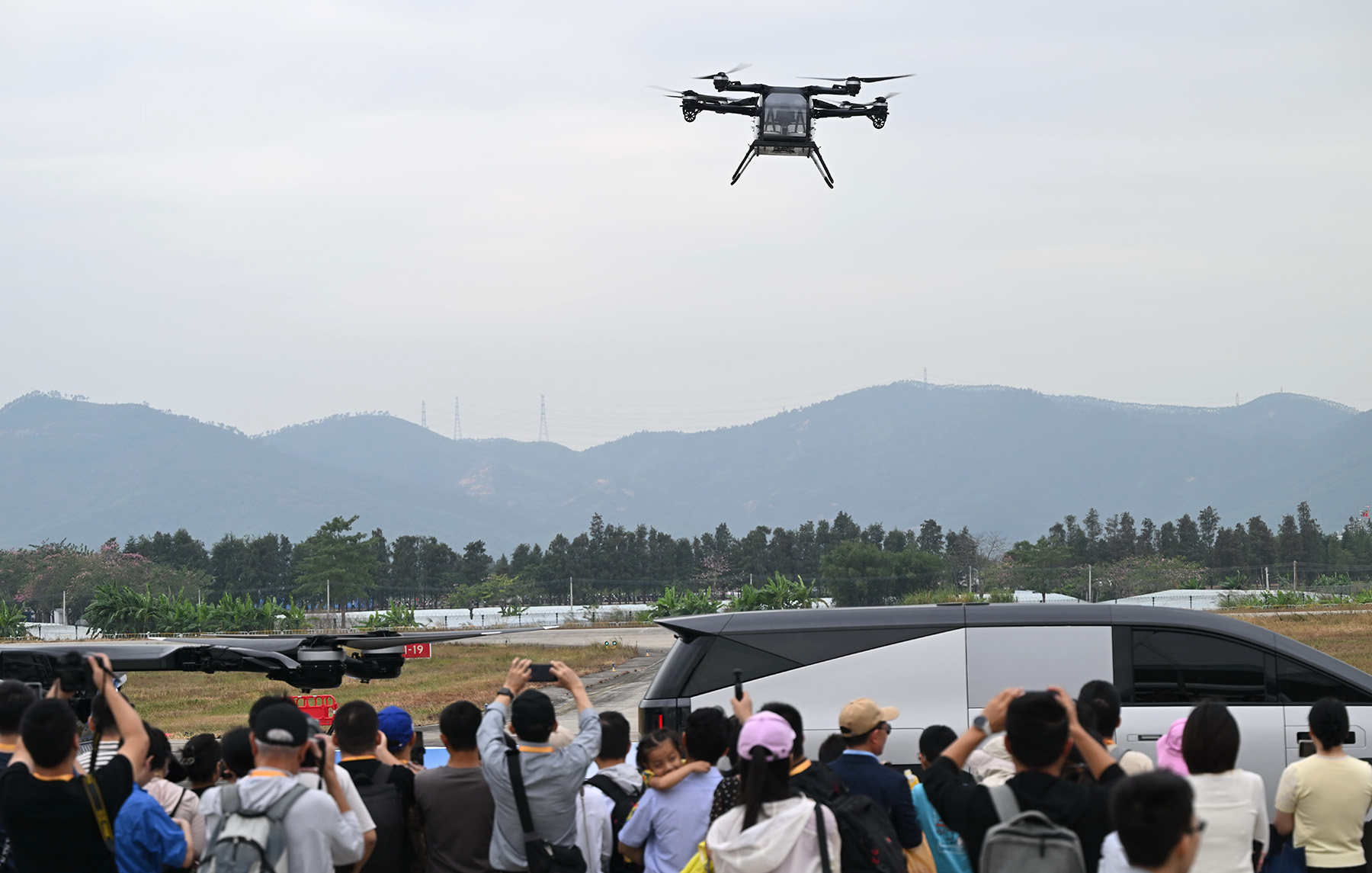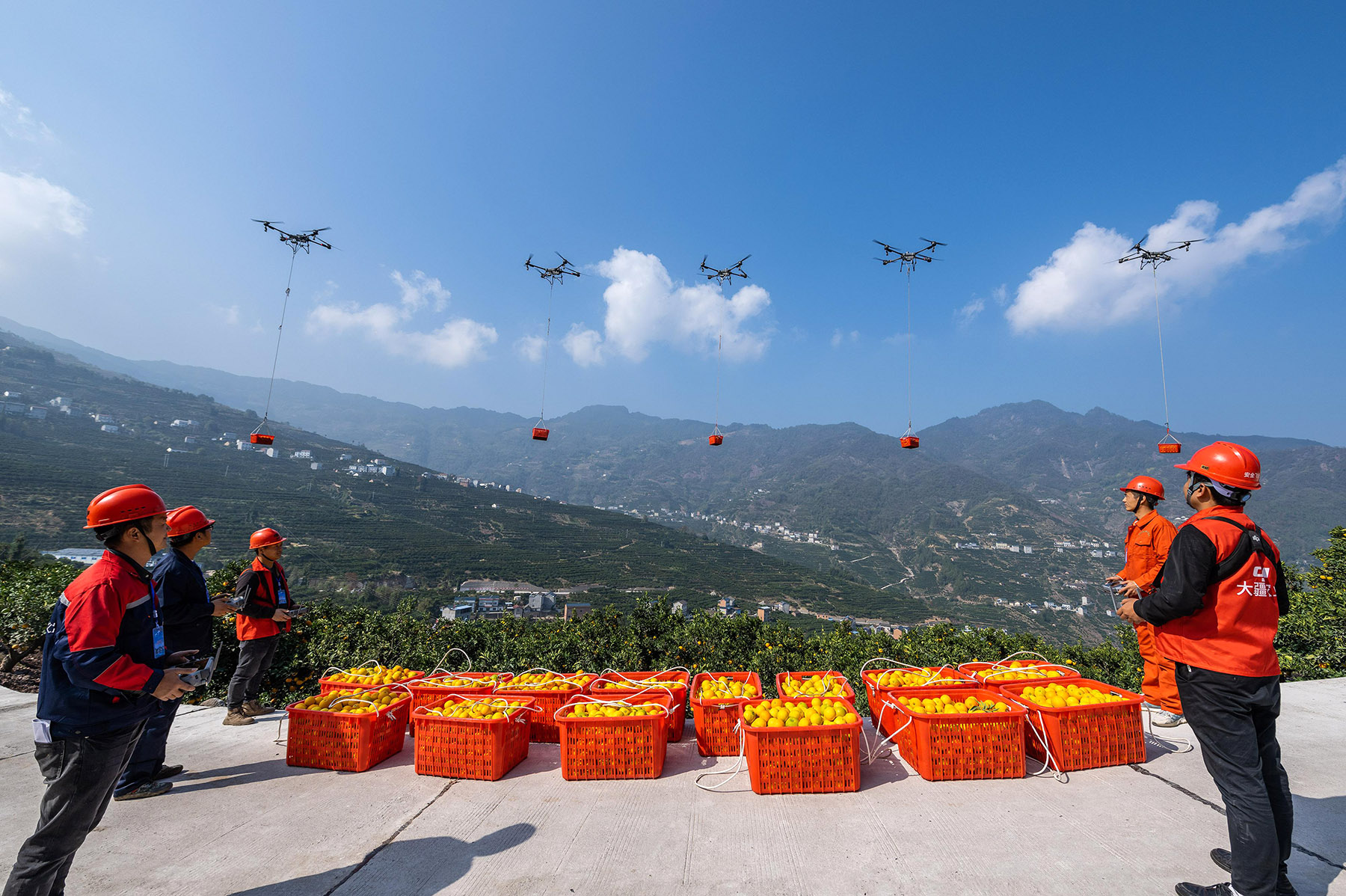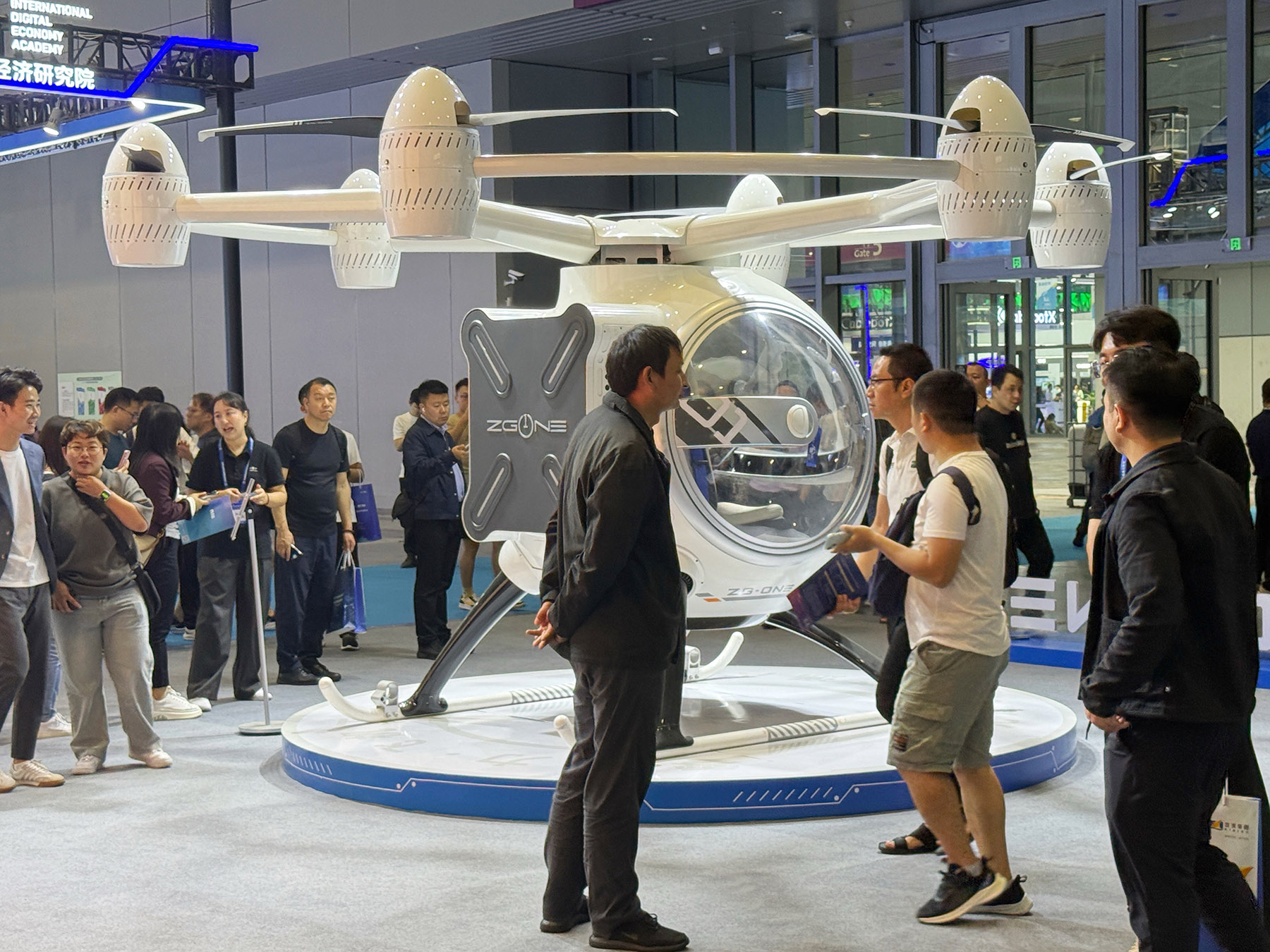There are now over 17,000 unmanned aerial vehicle firms in the country

China plans to promote the formation of a trillion-yuan ($138 billion) market for the low-altitude economy by 2030, fueling business growth opportunities of a large number of upstream and downstream industry players in this burgeoning sector.
A guideline proposed that China would establish more than 20 replicable and promotable low-altitude economy typical application demonstrations by 2027, according to the document jointly issued by four departments including the Ministry of Industry and Information Technology and the Civil Aviation Administration of China.
Guangdong province-based eVTOL (electric vertical take-off and landing) maker EHang Holdings Ltd said that with increasing policy support, the low-altitude economy in the country is entering a phase of high-speed growth.
READ MORE: China sets six pilot cities for eVTOL
EHang, a Nasdaq-listed company, signed an agreement with A-share listed Zhejiang Sunriver Culture Tourism Co Ltd in mid-November, and the two sides will together explore the industrial model of integrating low-altitude economy with cultural tourism consumption scenarios in China.
Zhejiang Sunriver Culture will purchase 50 EH216-S or similar pilotless passenger-carrying aircraft from EHang for cultural and tourism projects such as sightseeing based on market demand.
"EHang will continue to promote the applications of eVTOL in different air traffic scenarios, as well as promote the building of an industrial ecology and the innovation of business models for the low-altitude sector," said He Tianxing, vice-president of EHang Holdings. "We will combine our own advantages and actively seize the strategic opportunities emerging in this golden period of growth for the low-altitude economy."
The year 2024 is considered the inaugural year of China's low-altitude economy, representing a new milestone for the booming sector. As a typical representative of the in-depth integration of new-generation information technology and aviation technology, developing the low-altitude industry has significant strategic importance, industry experts observed.
The Ministry of Industry and Information Technology recently held a meeting, which noted for the development of low-altitude industry. The meeting noted that the low-altitude sector is an important way of development for cultivating new quality productive forces and new economic growth points.
A batch of guidelines issued by the government has clearly proposed support for the research and development, product validation and exploration of commercial application scenarios for low-altitude aircraft.

So far, more than 30 provincial-level regions have included the low-altitude economy in their government work reports. A number of local governments have introduced policies to support the research and manufacturing of aircraft, the building of infrastructure, airspace management and flight standards, thus forming a relatively complete support system for the industrial chain.
Several cities such as Chongqing; Suzhou, Jiangsu province; Guangzhou, Guangdong province; and Wuhan, Hubei province have launched low-altitude economic industry funds to drive the growth of the sector, with the largest scale of the fund coming in at 20 billion yuan.
As of now, there are over 17,000 unmanned aerial vehicle operating enterprises in China, and over 2 million UAVs have been registered with real names nationwide, according to China Air Transport Association.
"The next economic growth point will be the low-altitude sector, in my opinion. If the problem of traffic congestion is not solved, it would be difficult to develop the real economy," Ni Mingxuan, principal of the Hong Kong University of Science and Technology (Guangzhou), said during a recent forum in Guangzhou. "The technologies related to the low-altitude sector have been gradually maturing, and the advantage of three-dimensional space is obvious."
A number of eye-catching eVTOL aircraft were on display at the just concluded 15th China International Aviation and Aerospace Exhibition, also known as Airshow China, in Zhuhai, Guangdong.
As a key player in the low-altitude economy sector, Chinese electric vehicle maker Xpeng Motors' flying car unit Xpeng Aeroht has taken a giant leap into the future of transportation.
The company unveiled the first public autopilot flight of its modular flying car, the "Land Aircraft Carrier" during the airshow, and it is also the world's only car capable of storing an "aircraft" in its trunk.
During the airshow, Xpeng Aeroht received new orders for 2,008 units of its flying car, the largest of its kind globally, with customers coming from sectors such as transportation, tourism, real estate and technology.
"The orders mostly come from businesses, government institutes and public service departments, and such an achievement at least indicates that the low-altitude economy is encouraged and supported by the government," said Ye Liang, advanced manufacturing and mobility sector leading partner of accounting firm Ernst &Young. "The purpose of an aircraft is mainly for transportation and sightseeing. Based on current introductions, in my opinion, the transportation scenarios may be very limited, but the sightseeing scenarios seem more feasible for flying cars."

He added that for long-distance travel, consumers could achieve a flying experience around the scenic spots by renting such flying cars.
Meanwhile, Liu Xufeng, a senior consultant at consultancy firm Frost & Sullivan, said Xpeng Aeroht's latest order has driven the commercialization process of flying cars, and helped lay the foundation for its multi-field applications.
"For tourism and sightseeing, flying cars are expected to create a new experience of high-altitude sightseeing. For real estate projects, they will help provide air connections for high-net-worth clients. Besides, flying cars could quickly respond to emergency rescue demand in complex terrains and meet the demand for fast deliveries," Liu said.
During the airshow, Xpeng Aeroht's founder Zhao Deli showcased the fully automated separation and reconnection of the flying car between ground and air modules, demonstrating the country's innovation and potential in low-altitude economic growth.
"With just one touch on my smartphone, this 'transformer' releases the air module from the ground module," said Zhao.
ALSO READ: EHang marks new strides in global air mobility services
The "Land Aircraft Carrier "offers manual and autonomous flight modes, including auto-route planning, autonomous cruising, one-touch return, 360-degree obstacle detection and descent vision assistance.
The air module is an eVTOL structure, built with carbon fiber for lightweight durability, the company said. Such an aircraft can also be called an air taxi, and it is expected to become a main tool for sightseeing and intercity transportation in the future.
Currently, the company's flying car manufacturing base is under construction in Guangzhou and it is expected to become the world's first mass-production facility for flying cars using a modern assembly line.
With a planned annual capacity of 10,000 units, the factory will focus on producing the air module for the "Land Aircraft Carrier" and is scheduled for completion in the third quarter of 2025, with deliveries expected to begin in 2026.
Fan Feifei contributed to this story.


